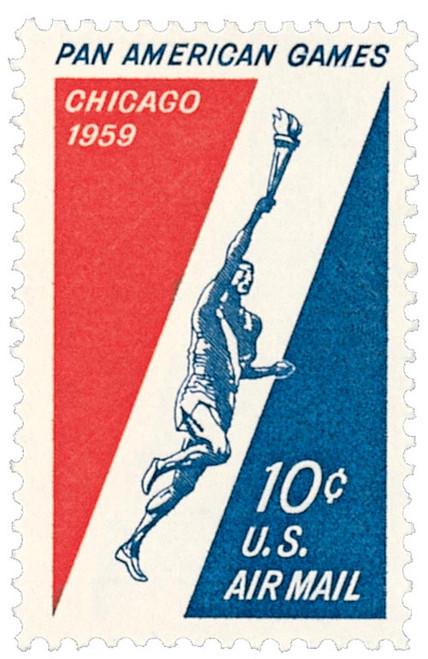
# C34 - 1947 10c Pan-American Bldg
1947 10¢ Pan-American Building
Quantity: 207,976,550
Color: Black
Founding Of The Pan American Union
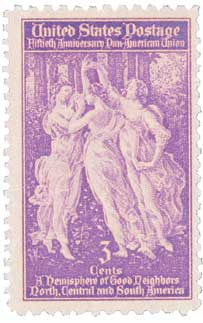
On April 14, 1890, the United States and several Latin American countries created the Pan American Union to address matters of common interest.
One of America’s earliest attempts to promote cooperation between nations in the Western Hemisphere was the passage of the Monroe Doctrine in 1823. That document prevented European nations from colonizing any countries in the Western Hemisphere. In spite of this, Spanish-American leaders did not completely trust the United States.
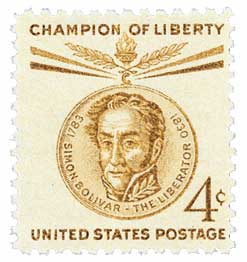
Three years later, Simón BolÃvar suggested an international organization in the Americas while attending the 1826 Congress of Panama. As he Bolivar saw it, such an organization could include a mutual military and defense pact and parliamentary assembly. Representatives from Gran Colombia (modern-day Colombia, Ecuador, Panama, and Venezuela), Peru, Bolivia, the United Provinces of Central America, and Mexico attended his proposed meeting. But only Gran Colombia ratified the “Treaty of Union, League, and Perpetual Confederation” that was set forth.
Major changes came in the next few years – Gran Colombia was embroiled in Civil War, the United Provinces of Central America was dissolved, and many began to focus more on their own nations than the New World as a whole.

Decades later, in the United States, Secretary of State James G. Blaine developed a similar interest in uniting the New World and pushed for a Pan-American Conference. He received approval from President Garfield and sent out invitations to all the nations in the Western Hemisphere. But then in September 1881, President Garfield was assassinated, and his successor, Chester A. Arthur fired Blaine and cancelled the conference. Blaine continued to lobby for the conference for several years and ultimately succeeded. Benjamin Harrison also restored him to his position Secretary of State.
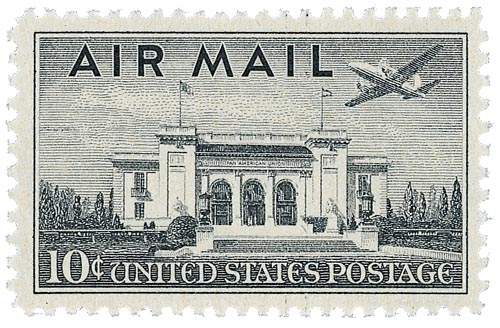
Before the conference began, Blaine invited the delegates from the other nations on a six-week rail trip through America’s industrial centers. The first conference then began on January 20, 1890. The 27 delegates from 13 countries discussed a number of issues. And while they couldn’t agree on everything, they did reach several agreements on commercial and trade issues as well as arbitration.
Another important issue the participants agreed on was that they should hold regular meetings and establish a permanent organization. On April 14, they formed the International Union of American Republics, which was to be served by a permanent organization called the Commercial Bureau of the American Republics. This day has since come to be known as the “Day of the Americas” and “Pan American Day.”
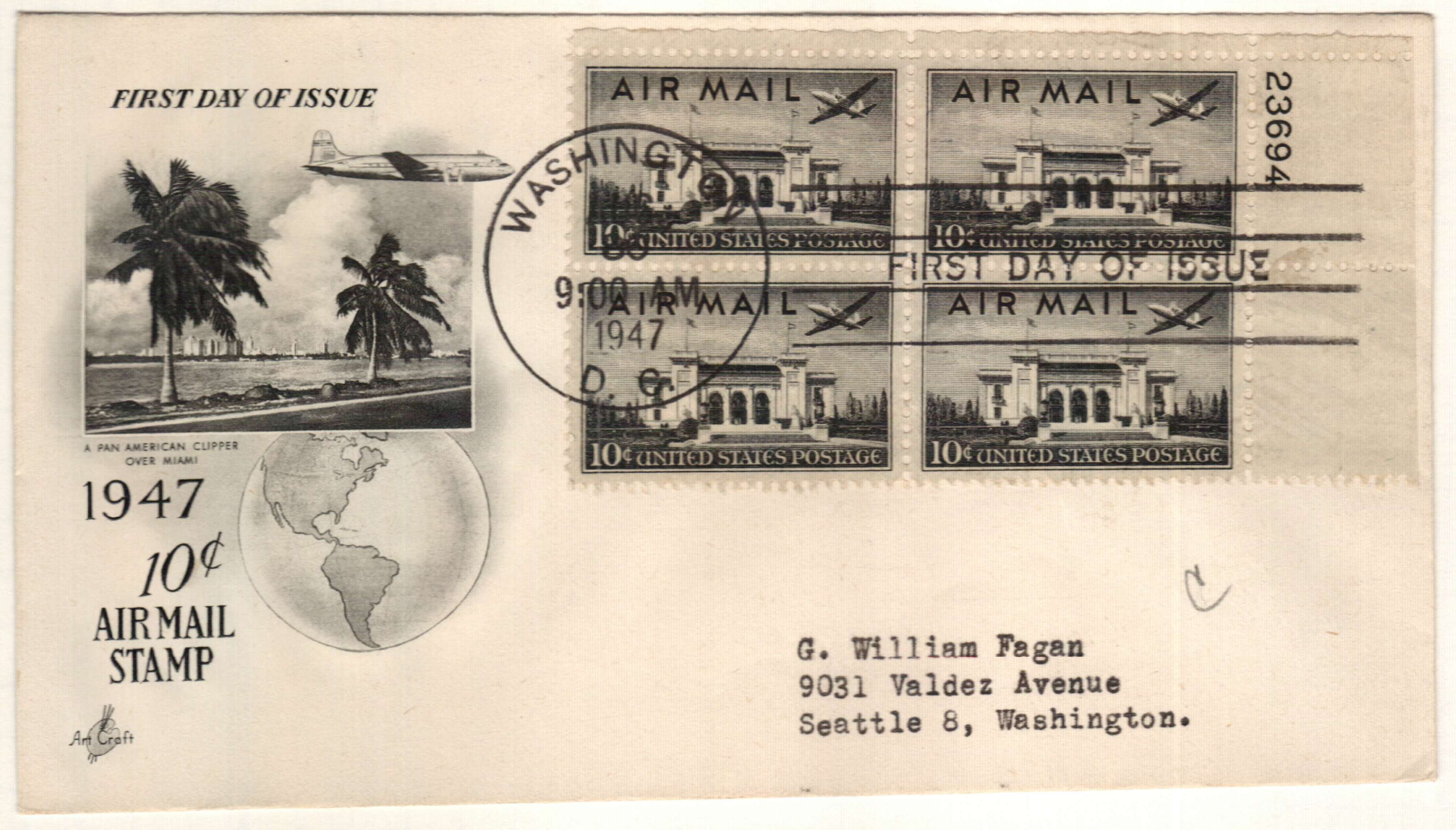
Twenty years later at the fourth conference, the organization was renamed the Union of American Republics and the Bureau became the Pan American Union. That same year, the Pan-American Union Building opened in Washington, D.C.
At the 1933 Pan-American Conference, the U.S. signed a Latin American resolution that denied any state to intervene in another nation’s affairs, which increased trust between nations and was invaluable during World War II. In 1948, the Union became the Organization of American States. Today it includes 35 independent states.
Click here to read a report from the First International American Conference.
Click here to view the painting U.S. #895 was based on.
1947 10¢ Pan-American Building
Quantity: 207,976,550
Color: Black
Founding Of The Pan American Union

On April 14, 1890, the United States and several Latin American countries created the Pan American Union to address matters of common interest.
One of America’s earliest attempts to promote cooperation between nations in the Western Hemisphere was the passage of the Monroe Doctrine in 1823. That document prevented European nations from colonizing any countries in the Western Hemisphere. In spite of this, Spanish-American leaders did not completely trust the United States.

Three years later, Simón BolÃvar suggested an international organization in the Americas while attending the 1826 Congress of Panama. As he Bolivar saw it, such an organization could include a mutual military and defense pact and parliamentary assembly. Representatives from Gran Colombia (modern-day Colombia, Ecuador, Panama, and Venezuela), Peru, Bolivia, the United Provinces of Central America, and Mexico attended his proposed meeting. But only Gran Colombia ratified the “Treaty of Union, League, and Perpetual Confederation” that was set forth.
Major changes came in the next few years – Gran Colombia was embroiled in Civil War, the United Provinces of Central America was dissolved, and many began to focus more on their own nations than the New World as a whole.

Decades later, in the United States, Secretary of State James G. Blaine developed a similar interest in uniting the New World and pushed for a Pan-American Conference. He received approval from President Garfield and sent out invitations to all the nations in the Western Hemisphere. But then in September 1881, President Garfield was assassinated, and his successor, Chester A. Arthur fired Blaine and cancelled the conference. Blaine continued to lobby for the conference for several years and ultimately succeeded. Benjamin Harrison also restored him to his position Secretary of State.

Before the conference began, Blaine invited the delegates from the other nations on a six-week rail trip through America’s industrial centers. The first conference then began on January 20, 1890. The 27 delegates from 13 countries discussed a number of issues. And while they couldn’t agree on everything, they did reach several agreements on commercial and trade issues as well as arbitration.
Another important issue the participants agreed on was that they should hold regular meetings and establish a permanent organization. On April 14, they formed the International Union of American Republics, which was to be served by a permanent organization called the Commercial Bureau of the American Republics. This day has since come to be known as the “Day of the Americas” and “Pan American Day.”

Twenty years later at the fourth conference, the organization was renamed the Union of American Republics and the Bureau became the Pan American Union. That same year, the Pan-American Union Building opened in Washington, D.C.
At the 1933 Pan-American Conference, the U.S. signed a Latin American resolution that denied any state to intervene in another nation’s affairs, which increased trust between nations and was invaluable during World War II. In 1948, the Union became the Organization of American States. Today it includes 35 independent states.
Click here to read a report from the First International American Conference.
Click here to view the painting U.S. #895 was based on.









